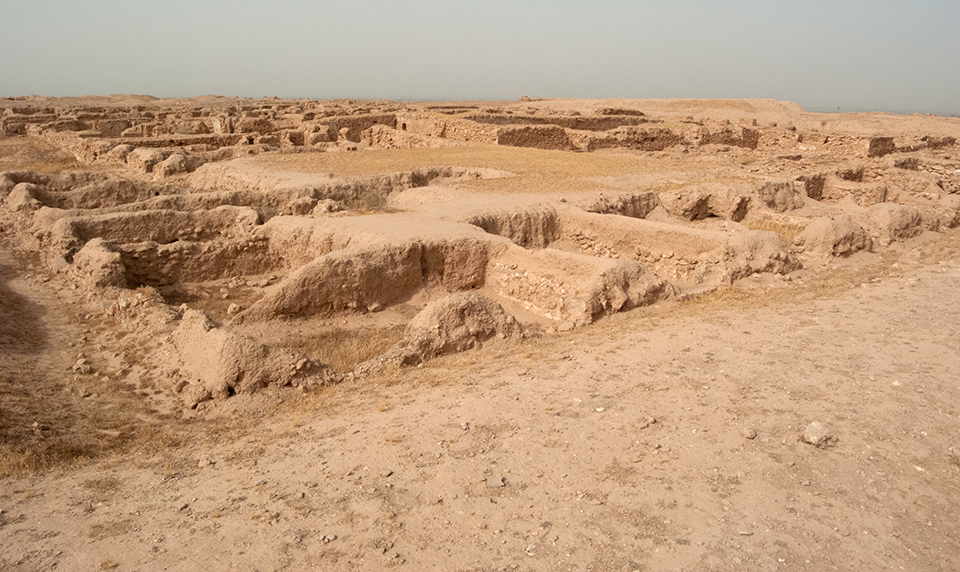View of Agora from southwest
23 September 2010 | Andrew Wilson/Manar al-Athar (Resource ID: 91883)

A group of civic buildings, houses, shops, and workshops occupying eight blocks in the center of Dura was given the Greek name Agora (marketplace) by the Yale-French excavation team. The Agora’s Hellenistic phase included buildings constructed with large dressed gypsum blocks, which were reused in later structures. Buildings from the Arsacid (Parthian) and Roman period include the registry or public record office (Chreophylakeion), which featured a courtyard and several rooms, one of which contained niches for storing records and graffiti with the officials’ Chi-Rho monogram. Workshops, inns, bars, and shops located within houses indicate that the area was used commercially, and moulds for producing various objects were discovered. Additionally, textile-dyeing installations and graffiti recording transactions found in the Agora are important evidence for textile production and trade. This photograph was taken six months before the conflict in Syria began in March 2011: subsequently, Dura has been devastated by intensive looting.